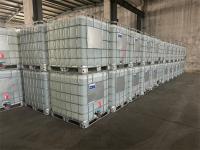Our Products
Product Center / Polydiallyldimethylammonium chloride (polyDADMAC) FL4635 can be replaced by Chinafloc EM4635


Polydiallyldimethylammonium chloride (polyDADMAC) FL4635 can be replaced by Chinafloc EM4635
.jpg)
Polydiallyldimethylammonium chloride (polyDADMAC) FL4635 is a kind of coagulant with 35% solid content and 10000-20000 viscosity.can be used for Water Treatment and Purification,Papermaking Industry,Textile Industry,Oil and Gas Industry and other applications.
Polydiallyldimethylammonium chloride (polyDADMAC) is a cationic polymer widely acclaimed for its multifaceted utility in various industrial, environmental, and commercial applications. Recognized for its coagulating and flocculating properties, polyDADMAC plays a pivotal role in processes ranging from water treatment to personal care product formulation. This comprehensive exploration delves into the myriad applications of polyDADMAC, shedding light on its significance and indispensability across diverse sectors.
Water Treatment and Purification
A primary application of polyDADMAC lies in the treatment and purification of water, where it serves as an effective coagulant and flocculant. Its mechanism involves neutralizing negatively charged colloidal particles in water, facilitating their aggregation into larger flocs that can be readily removed through sedimentation, filtration, or flotation. This process significantly improves water clarity, reduces turbidity, and eliminates pathogens and organic contaminants. In municipal water treatment facilities, polyDADMAC is instrumental in producing potable water that meets stringent quality standards. Similarly, in industrial settings, it aids in treating wastewater from various sectors such as manufacturing, mining, and food processing, ensuring that effluents comply with environmental regulations before discharge.
Papermaking Industry
In the realm of papermaking, polyDADMAC is utilized as a retention and drainage aid. It enhances the retention of fines and fillers, reducing material loss and improving the quality of the paper. By facilitating better water drainage during the paper forming process, it improves the efficiency of paper machines and reduces energy consumption in drying processes. This not only optimizes production costs but also contributes to the sustainability of paper manufacturing operations.
Textile Industry
The textile industry benefits from the application of polyDADMAC in the dyeing process, where it acts as a dye fixative. It improves the uptake and retention of anionic dyes on fibers, resulting in more vibrant and long-lasting colors. Additionally, polyDADMAC is employed in wastewater treatment within the textile industry to remove suspended solids and dye particles, enhancing the recyclability of water and reducing the environmental impact of textile production.
Oil and Gas Industry
In oil and gas extraction and processing, polyDADMAC is used for water clarification and treatment. It assists in separating oil droplets and suspended solids from water used in drilling and hydraulic fracturing processes. This enables the reuse of water in operations and helps in managing the environmental footprint of oil and gas extraction activities.
Cosmetic and Personal Care Industry
PolyDADMAC finds applications in the formulation of cosmetics and personal care products, particularly as a conditioning agent in hair care products such as shampoos and conditioners. Its cationic nature allows it to bond with the negatively charged surfaces of hair, improving manageability, reducing static, and enhancing the overall appearance of the hair.
Sludge Dewatering
In both municipal and industrial wastewater treatment plants, polyDADMAC is used to enhance the dewatering efficiency of sludge. By promoting the aggregation of sludge particles, it facilitates the separation of solids from water, resulting in a more concentrated sludge that is easier and less costly to handle, treat, and dispose of.
Algae Control
PolyDADMAC is effective in controlling algae growth in ponds, lakes, and reservoirs. By coagulating algae cells, it aids in their removal from water bodies, thus mitigating the impact of algae blooms on water quality and ecosystem health. This application is particularly valuable in maintaining the operational efficiency of water treatment plants and ensuring the aesthetic and recreational value of natural water bodies.
Challenges and Future Directions
Despite its widespread use and benefits, the application of polyDADMAC necessitates careful consideration of potential environmental and health impacts. The polymer's persistence in the environment and possible toxicity to aquatic life highlight the need for judicious use and ongoing research into safer, more biodegradable alternatives. Advances in polymer science are continuously exploring modifications to polyDADMAC's structure to enhance its performance while minimizing adverse effects.
Furthermore, the evolving regulatory landscape concerning water quality and environmental protection poses both challenges and opportunities for innovation in polyDADMAC applications. Stricter regulations drive the development of more efficient and environmentally friendly water treatment technologies, in which polyDADMAC and its derivatives can play a crucial role.


